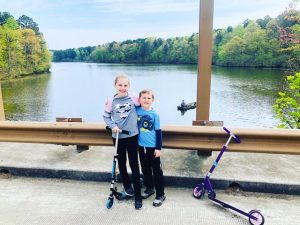Stepping Into the Wild: Creative Outdoor Learning
Creating an outdoor classroom is a fun and imaginative way to engage students in learning about nature and the world around us.
Read More Spending time outdoors and in nature is good for both the body and the mind. Some of our favorite activities such as walking, hiking, and biking are done outdoors and it’s a great space for unstructured creative play. Interacting with nature provides opportunities for discovery and creative thinking and supports social-emotional growth and development. Build the outdoors into your day to day – whether opting to play outside or bringing nature to you with arts and crafts.
Spending time outdoors and in nature is good for both the body and the mind. Some of our favorite activities such as walking, hiking, and biking are done outdoors and it’s a great space for unstructured creative play. Interacting with nature provides opportunities for discovery and creative thinking and supports social-emotional growth and development. Build the outdoors into your day to day – whether opting to play outside or bringing nature to you with arts and crafts.
Get creative when exploring the great outdoors and use your imagination to turn the things around you into so much more.
Exploring nature together is a great way to spend time as a family, too. Older kids and younger kids can work together or can explore more independently or using age-appropriate activities.
Remember to model respect for nature and helping to instill that respect in others. Discuss responsible collecting and make sure you’re in an area where it’s permitted. Clean up any trash and be mindful of animals in their natural home.
Don’t be afraid to get dirty! Sometimes a little play with dirt, water, sand, and mud is all that’s needed. Explore different senses such as the feeling of grass under your feet, the sound of leaves crunching, or the smell after a fresh rainstorm.
For more activities and ideas like this one, be sure to sign up for our news and updates. And if you like what you see, please donate to support our work creating more ways to help build a healthier future for kids.
Categories: Social-Emotional Health, At Home, At School, Digital Resource